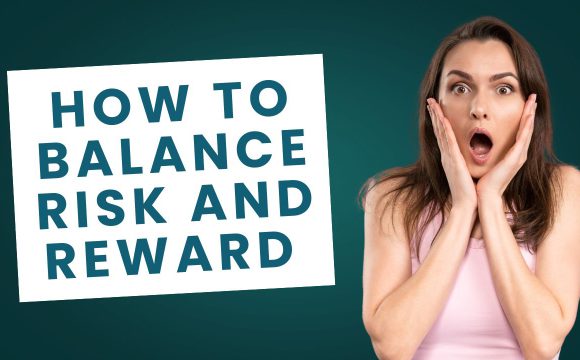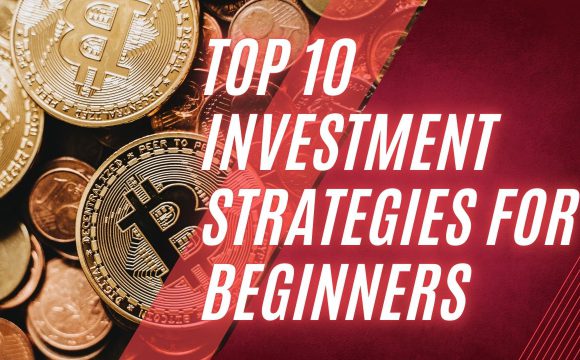Introduction: A New Age of Investing
In today’s fast-paced world, where the stock market seems to be a roller coaster ride and traditional investments may feel like they’re stuck in the mud, the concept of alternative investments has emerged like a knight in shining armor. Alternative investments encompass a variety of assets beyond stocks and bonds, enticing investors with unique opportunities, potential higher returns, and varying degrees of risk. So, why are these unicorns of the investment world becoming increasingly popular? Because people have realized that diversification is key, and it’s far more exciting to explore new frontiers.
Why put all your eggs in one basket when you can build a whole farm? In this article, we will explore several fascinating alternative investment options, including real estate, cryptocurrencies, collectibles, and more.
Understanding Alternative Investments
Definition and Scope of Alternative Investments
Alternative investments are financial assets that do not fall into the traditional investment categories of stocks, bonds, or cash. This expansive realm includes everything from real estate and commodities to hedge funds and private equity. The beauty of alternative investments is their diversity, which allows investors to tailor their portfolios according to their preferences, goals, and risk appetite.
Common Characteristics: Illiquidity, Complexity, and Lower Correlation with Traditional Assets
Unlike their stock and bond counterparts, many alternative investments share characteristics such as illiquidity (they can’t be easily sold or exchanged), complexity (they often require specialized knowledge), and lower correlation with traditional assets (they may not follow the same market rules). This can be a blessing in disguise, as it may help smooth out the overall investment experience and reduce volatility.
Why Diversity is Key: “Don’t Just Collect Stamps; Explore the Whole Post Office!”
Investing in a diverse range of assets reduces risk. It’s all about not putting all your financial hopes in one basket. By exploring alternative investments, you can potentially enhance your portfolio’s performance, hedge against economic downturns, and fulfill your desire for unique investments that tickle your fancy.
Real Estate: The Classic Favorite
Types of Real Estate Investments: Residential, Commercial, and Raw Land
Real estate has been a favorite for generations, and for good reason. Investing in real estate can take several forms, including residential properties (think rental homes), commercial properties (think office buildings), or even raw land (which you can buy patiently and develop later—maybe after winning the lottery). Each type has its unique charm and potential returns.
The Power of Passive Income: Rental Properties and Cash Flow
One of the most alluring aspects of real estate is the potential for passive income. Owning rental properties allows you to earn cash flow while sitting on your couch watching reruns of your favorite show. With the right property management strategies, real estate can become a lucrative source of income with relatively manageable effort.
Flipping Houses: A Little Risk, A Lot of Potential Reward
If you’re feeling adventurous, house flipping can be an exciting venture. The idea is simple: buy a property below market value, renovate it, and sell it for a profit. However, beware—this endeavor requires savvy skills, understanding the market, and a healthy budget. In real estate, just like in life, it’s the thrill of the chase that keeps things interesting.
Real Estate Investment Trusts (REITs): For Those Who Love Absentee Landlord Life
For those who prefer not to get their hands dirty, Real Estate Investment Trusts (REITs) offer a way to invest in real estate without the responsibilities of being a landlord. With REITs, you can own a share of a portfolio that may include apartment buildings, shopping malls, or office towers, all from the comfort of your favorite armchair.
Cryptocurrencies: The Hot Tech Trend
What Are Cryptocurrencies? A Simple Breakdown
Cryptocurrencies are digital or virtual currencies that utilize cryptography for security. The most famous of these is Bitcoin, but there are thousands more—altcoins, they call them! These digital currencies operate on blockchain technology, a decentralized system that keeps records secure and transparent.
Popular Cryptocurrencies: Bitcoin, Ethereum, and the Not-So-Humble Altcoins
As the cryptocurrency market has rapidly evolved, numerous cryptocurrencies have gained traction. Bitcoin and Ethereum often steal the spotlight, but there are many altcoins with innovative applications and unique features vying for investor attention. It’s like a carnival—there’s something for everyone, and hopefully, no one gets sick on the rides!
Blockchain Technology Explained: “A Genie in a Digital Bottle!”
Blockchain is the underlying technology behind most cryptocurrencies. Imagine it as a digital ledger that keeps all transactions transparent and secure—no more need for a bank teller! With its built-in security measures, blockchain technology has the potential to revolutionize various sectors. Plus, let’s face it, saying “blockchain” makes us sound smart at parties!
Risks and Rewards of Crypto Investing: Volatility and Potential Returns
While cryptocurrencies can offer tantalizing potential returns, they come with significant risks. The market is notoriously volatile, and investors need to tread carefully. Remember: “What goes up must come down,” and sometimes it’s a swan dive into the deep end of the pool. Striking a balance between cautious optimism and realistic expectations is crucial.
Peer-to-Peer Lending: A New Kind of Ally
How P2P Lending Works: Connecting Lenders and Borrowers
Peer-to-peer (P2P) lending has emerged as a modern solution for those seeking loans without the need for traditional financial institutions. In essence, P2P platforms connect individuals who need money with those willing to lend it. Lenders can earn interest on their loans, while borrowers gain access to funds that might not be available through traditional channels. It’s like a digital matchmaking service, but instead of love, it’s all about lending.
The Benefits of Becoming a Lender: Interest Rates and Diversification
For lenders, P2P lending offers an attractive alternative to traditional savings accounts, often yielding higher interest rates. The thrill of watching your money work for you, while helping someone achieve their goals, can be quite satisfying! Plus, through lending to multiple borrowers, you can diversify your risk—just make sure you don’t bet all on one horse.
Risks Involved: The Chance of a Borrower Defaulting
That being said, there are risks involved. Just like any matchmaking venture, some relationships may not work out—as in, borrowers may default on their loans. Understanding the creditworthiness of borrowers and the platform’s risk management strategies is essential before diving in. As with all investments, due diligence is key!
Platforms to Consider: A Brief Review of Top P2P Lending Sites
Several P2P lending platforms are available, each with unique features. Some popular ones include LendingClub, Prosper, and Upstart. Explore these platforms to find one that suits your risk tolerance and investment style. Remember, choosing the right platform could be your gateway to financial success!
Collectibles: The Tangible Treasure Hunt
What Qualifies as a Collectible? From Stamps to Vintage Toys
Collectibles hold a special place in many hearts—be it stamps, coins, vintage toys, or comic books. But what exactly qualifies as a collectible? The short answer is: something that sparks joy and has potential value. While personal enjoyment is essential, it’s also vital to consider market demand and rarity in your pursuits.
How to Value Collectibles: Rarity, Condition, and Market Demand
Valuing collectibles involves understanding their rarity, condition, and overall market demand. For example, a mint-condition baseball card from a legendary player can fetch thousands, while a dog-eared comic book may barely cover your coffee. Learning how to assess these factors will put you on a path to becoming a savvy collector.
The Joy of Nostalgia: “These Aren’t Just Toys; They’re Memories!”
Investing in collectibles isn’t only about financial gain; it’s also about reliving cherished memories. There’s something heartwarming about unearthing a childhood toy or a vinyl record. The combination of nostalgia and financial investment may provide emotional satisfaction that transcends monetary gains.
Risks and Challenges: Market Fluctuations and Storage Issues
While the world of collectibles can be exciting, it also has its pitfalls. The market can fluctuate dramatically, affecting values, and storing collectibles safely can present challenges—after all, you wouldn’t want your prized possessions at risk of theft or damage. Balancing personal passion with market awareness is crucial in this niche.
Art and Antiques: Investing in Beauty
The Allure of Fine Art: Emotional and Financial Value
Investing in art can be a way to enjoy beauty while building financial wealth. Fine art pieces—paintings, sculptures, and installations—can appreciate significantly over time, making them attractive investment opportunities. Art is not just a luxury; it can be a wise financial decision (and an impressive conversation starter!).
How to Start Investing in Art: Auctions, Galleries, and Online Platforms
Starting your art investment journey can feel daunting, but it doesn’t have to be! Attend local galleries, auctions, or art fairs to immerse yourself in the vibrant world of art. Online platforms, like Artsy and Saatchi Art, also provide access to innovative artists. Just remember: buying art should ignite joy!
The Antique Market: A Museum at Home or a Financial Venture?
Antiques can bring history to your home while serving as investment assets. From furniture to fine china, antiques hold both aesthetic and financial value. However, it’s vital to differentiate between valuable antiques and replicas—knowledge is power here!
Protecting Your Investment: Insurance and Proper Documentation
Investing in art and antiques necessitates protective measures. Insurance can safeguard against loss or damage, while maintaining proper documentation enhances resale value. After all, art collecting is a marriage of passion and pragmatism!
Commodities: Riding the Market Waves
What Are Commodities? A Look at Gold, Silver, Oil, and Agricultural Products
Commodities are basic goods used in commerce that can be interchangeable with other goods of the same type. Examples include gold, silver, oil, and agricultural products like corn and wheat. Investing in commodities offers exposure to raw materials, and can serve as a hedge against inflation.
Ways to Invest: Direct Ownership vs. Commodity Trading
Investors can enter the commodities market through direct ownership (think gold bullion) or through trading futures and options contracts. Each approach carries its own sets of risks and rewards, so understanding the landscape will help you make informed decisions.
Understanding the Cyclical Nature of Commodities
Commodities prices can fluctuate based on supply and demand dynamics, economic conditions, and geopolitical events. Understanding these market cycles can help you identify investment opportunities—just like riding the waves at the beach!
The Rise of Green Commodities: A Nod to Sustainability
As sustainability becomes a focal point, green commodities—such as renewable energy products and organic agricultural goods—are on the rise. Investing in these commodities not only aligns with ethical values, but also offers new opportunities for profit in a changing world.
Startups and Equity Crowdfunding: Betting on the Future
What is Equity Crowdfunding? A New Opportunity for Everyday Investors
Equity crowdfunding democratizes investing by allowing individuals to invest in startups in exchange for equity. Once exclusive to venture capitalists, this approach opens the door for everyday investors to support innovative businesses while hoping for substantial returns.
Assessing Risks in Startup Investments: “Remember, Not Every Unicorn is Magical!”
Investing in startups is exhilarating, but it comes with considerable risk. Many startups fail within the first few years, so it’s essential to evaluate the business model, team, and potential market before putting your hard-earned cash on the line—after all, not every unicorn is as magical as it seems!
Platforms to Explore: A Peek at the Leading Equity Crowdfunding Sites
Numerous platforms exist for equity crowdfunding, including SeedInvest, Crowdcube, and Wefunder. Each platform features unique offerings and backgrounds—researching them helps you find the right fit for your investment strategy.
Success Stories and Major Pitfalls: Learning from Those Who Dared to Dream
While some startups achieve phenomenal success, others falter. Studying success stories (think Airbnb) alongside lessons from failures creates a holistic understanding of the dynamics at play in the startup world. Wisdom comes from both triumph and tribulation!
Hedge Funds and Private Equity: The Elite Club
What Makes Hedge Funds Different from Traditional Funds?
Hedge funds are investment funds that utilize various strategies to generate high returns for their investors, often while taking on higher risk. Unlike traditional mutual funds that cater to the general public, hedge funds are typically open only to accredited investors due to their complex strategies and potential for significant losses. Think of hedge funds as the VIP section of the investment world, where the drinks are strong, and the stakes are even higher.
The Allure of High Returns: What Investors Should Know
Hedge funds often boast the potential for high returns, with some employing strategies like short selling, derivatives, and leverage. However, these come with inherent risks, and past performance doesn’t guarantee future results. It’s vital for investors to thoroughly research any hedge fund’s strategies and historical performance before jumping into the deep end.
Minimum Investment Requirements and Accessibility
For most hedge funds, the minimum investment can range from $100,000 to several million dollars, making them less accessible to the average investor. But for those who can meet the bar, there’s an enticing opportunity to capitalize on unique market strategies—just be prepared to bring your wallet and your sense of adventure!
The Importance of Due Diligence: “Trust, But Verify… Often!”
Investing in hedge funds necessitates a thorough due diligence process. Assess the fund’s management team, investment philosophy, and risk factors involved. Remember, in the world of hedge funds, knowledge is power—do your homework or risk being left out in the cold!
Investing in Distressed Assets: The Purchase of Opportunity
What Are Distressed Assets? Real Estate, Loans, and More
Distressed assets are undervalued properties or financial instruments that have fallen significantly in value due to various factors—such as market downturns, foreclosure, or financial distress. These investments can range from real estate to corporate bonds. For savvy investors, these assets represent a unique opportunity for high potential returns, making it feel like treasure hunting!
Risks and Rewards: “Sometimes, Diamonds Are Just Coal with Potential!”
Investing in distressed assets can be akin to finding a diamond in the rough. With significant risk comes the potential for substantial rewards, as acquiring these assets at a fraction of their value can lead to impressive gains after rehabilitation or market recovery. However, be cautious—these opportunities can also be fraught with hidden challenges and costs.
How to Identify Good Opportunities in Distressed Markets
Identifying distressed assets requires diligence and expertise. Researching local markets, understanding economic indicators, and networking with real estate professionals can help you sift through the rubble for hidden gems. The right opportunity can make you feel like a financial Indiana Jones, navigating a world of possibilities!
Tips for Turning Distressed Assets into Profitable Ventures
To successfully turn distressed assets into profit, you’ll need a clear plan. Whether rehabbing a distressed property or working out a loan modification, having a strategy ensures you’re equipped to navigate potential pitfalls. Having a team of professionals—contractors, real estate agents, or legal experts—can also aid in the journey.
Sustainable and Ethical Investments: Making a Difference
What is ESG Investing? Environmental, Social, and Governance Criteria
ESG (Environmental, Social, and Governance) investing focuses on companies that prioritize sustainable practices and ethical governance. This investment philosophy enables individuals to align their financial goals with their values, which is surely more fulfilling than just buying shares in a company that treats the planet poorly!
The Rise of Impact Investing: Profits and Purpose Combined
Impact investing takes ESG a step further by actively seeking to generate charitable benefits alongside financial returns. Investors consider how their money can foster positive change—whether it’s clean energy projects, affordable housing initiatives, or healthcare advancements. It’s capitalism with a heart—financial success doesn’t have to come at the expense of the world!
How to Choose Sustainable Investment Vehicles: Key Considerations
When choosing sustainable investments, consider various factors, such as the company’s track record in sustainability, governance practices, and overall community impact. Review ratings from reputable ESG research firms and pay attention to industry trends to make informed decisions. Remember, your investments can be both profitable and meaningful!
Profitability vs. Ethics: The Balancing Act
Investors often wrestle with balancing the potential for high returns and ethical considerations. The good news is that many sustainable investments have shown considerable performance, reflecting a growing demand for responsible practices. Ultimately, combining profitability with ethical considerations can be a win-win scenario!
The Role of Professional Advisors: Don’t Go It Alone!
When to Seek a Financial Advisor for Alternative Investments
Navigating the alternative investment landscape can be complex, and seeking advice from a financial professional is often a wise move. If you’re unsure where to start, have limited knowledge of a specific asset class, or need a cohesive investment strategy, a seasoned advisor can save you time, money, and headaches.
How to Choose the Right Advisor: Credentials and Specialties Matter
When searching for an advisor, ensure they have the right credentials and experience specifically in alternative investments. Look for certifications like CFA (Chartered Financial Analyst) or CFP (Certified Financial Planner) to gauge their professionalism. It’s also wise to find someone whose investment philosophy aligns with your own.
Understanding Fees and Commissions: Transparency is Key
Investors should never shy away from discussing fees with potential advisors. Understanding how they charge—whether through a flat fee, percentage of assets under management, or commissions—ensures there are no surprises down the road. Transparency fosters trust, and trust is vital in any successful advisory relationship!
The Importance of Continuous Education: “You Can’t Always Rely on Your GPS!”
The financial landscape constantly evolves, so staying informed is crucial. Financial advisors who focus on continuous education can provide valuable insights on new opportunities and changing regulations. As the saying goes, “You can’t always rely on your GPS!” Staying informed keeps you on the right path in your investment journey.
The Importance of Research and Due Diligence
Crafting Your Investment Strategy: How to Assess Personal Goals and Risk Tolerance
Every investor should start with a clear investment strategy that considers individual goals, timelines, and risk tolerance. Understanding your appetite for risk will inform your investment decisions and help tailor your portfolio to fit your financial aspirations.
Resources and Tools for Research: Websites, Publications, and Communities
Numerous resources are available for conducting research in alternative investments. Websites like Investopedia, Seeking Alpha, and market-specific forums can provide valuable insights. Additionally, consider joining investment communities online or attending local meetups to exchange knowledge and build your network.
Avoiding Scams: Red Flags to Watch Out For
While many alternative investments are legit, scams exist. Look for red flags: unrealistic returns, pressure to invest quickly, and lack of transparency. Always conduct thorough research and trust your instincts—if it looks too good to be true, it probably is!
Continual Learning: Stay Updated in the Investment World
Investing is a journey, not a destination. Market trends change, technologies evolve, and new opportunities arise. Staying educated will put you in a position to make informed decisions and adapt your strategy as necessary.
Conclusion: Build Your Unique Portfolio
Recap of the Diverse Options for Alternative Investments
Throughout this exploration, we’ve uncovered a number of exciting alternative investment options—from real estate to cryptocurrencies, collectibles, and everything in between. Each category comes with its own unique characteristics, risks, and potential rewards, offering a wide range of possibilities for aspiring investors.
The Importance of Patience and Long-Term Thinking
As you venture into the world of alternative investments, remember that patience is a virtue. Wealth building requires time, research, and a willingness to learn from your experiences. Short-term market fluctuations can be disheartening, but keeping a long-term perspective helps maintain your investment course.
A Motivating Note: “The Best Time to Plant a Tree Was 20 Years Ago; The Second Best Time Is Now!”
So, if you’re feeling inspired to explore alternative investments, remember this: the best time to start was yesterday, but the second best time is now! By taking decisive action today, you’re paving the way for a wealthier, more diversified future—one where you can kick back, relax, and enjoy the fruits of your labor.
FAQs: Clearing the Air
Common Questions About Alternative Investments (Liquidity, Volatility, and Returns)
Are alternative investments liquid?
Many alternative investments are not as liquid as stocks or bonds. They often require a longer commitment of time before investors can cash out.
How volatile are alternative investments?
Volatility varies by asset class. For instance, real estate tends to be more stable than cryptocurrencies, which can fluctuate wildly.
What are typical returns on alternative investments?
Returns can vary widely—while hedge funds may promise high returns, distressed assets can offer significant upside when rehabilitated.
Quick Tips for Beginners Venturing into Alternative Investing
Start with what interests you and align it with your knowledge.
Diversify—don’t put all your eggs in one basket.
Focus on long-term goals rather than short-term gratification.
Seek professional advice if overwhelmed by choices.
Wrapping Up: Resources for Continuous Education
To further your education in alternative investments, explore books, online courses, and reputable investment firms’ blogs that specialize in alternative strategies. The more you know, the more effectively you can navigate this dynamic and rewarding landscape.







